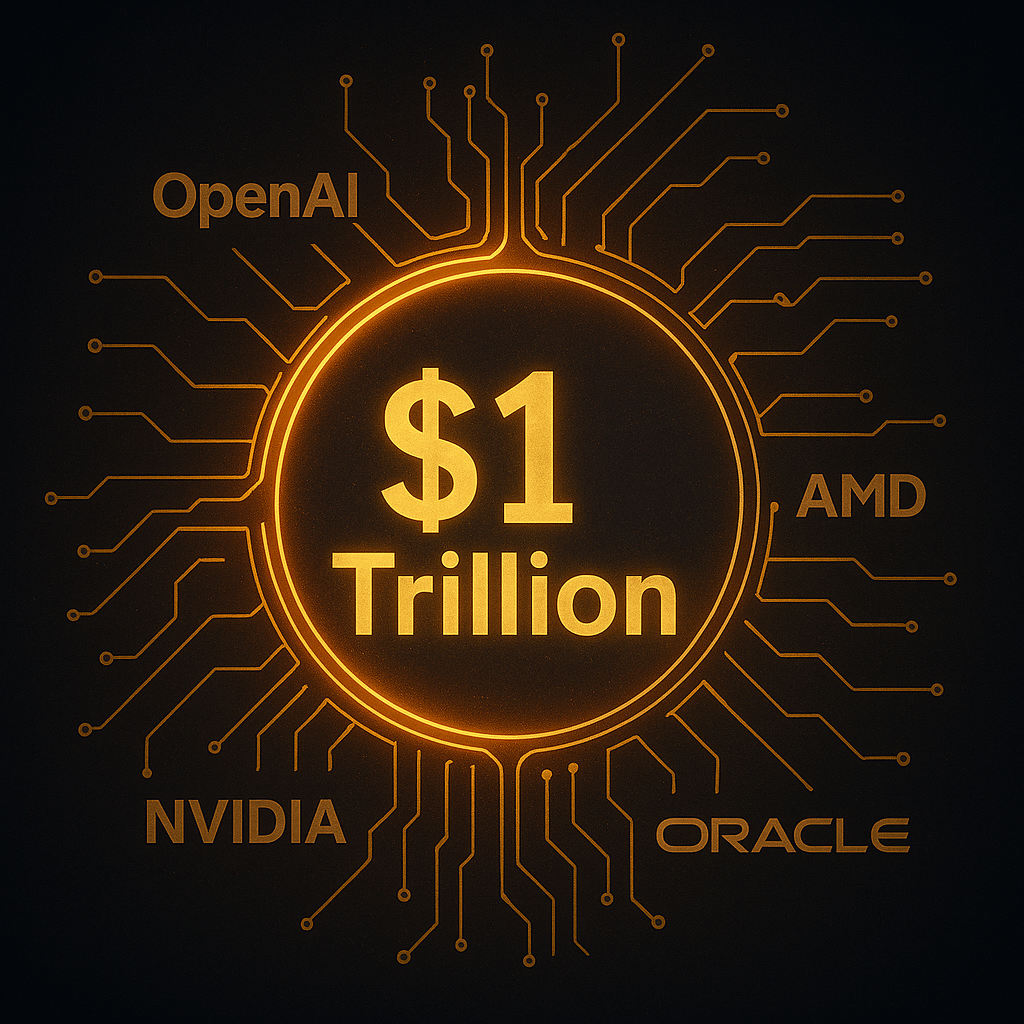By BitVision Editorial Team
The artificial intelligence gold rush has entered its most expensive phase yet — and perhaps its most fragile. OpenAI, the company that ignited today’s AI mania, now sits at the center of a trillion-dollar network of intertwined deals, vendor financing, and circular dependencies that look less like innovation and more like leverage on steroids.
The Circular Money Machine
At first glance, OpenAI’s partnerships read like a list of the tech world’s most powerful names — NVIDIA, AMD, Oracle, and CoreWeave. But behind the headlines, many of these arrangements aren’t based on traditional demand.
In essence, OpenAI has agreed to buy chips and data-center capacity from these firms — while simultaneously receiving equity, warrants, or strategic stakes in return. Oracle is both OpenAI’s partner and NVIDIA’s ally. CoreWeave buys GPUs from NVIDIA and leases capacity back to OpenAI. AMD supplies chips to OpenAI, which gets AMD warrants in exchange.
It’s an elegant but precarious loop — vendors funding their own buyers. None of it is illegal, but it blurs the line between real market demand and mutual balance-sheet inflation. When everyone props up everyone else, it can look like growth — until someone runs out of cash.
The Trillion-Dollar Question
Reports estimate OpenAI’s obligations from these partnerships could reach $1 trillion. The company hasn’t explained how it will fund such commitments. Even with Microsoft’s backing and projected revenues, the math strains belief.
Suppose these contracts are financed through credit, equity swaps, or future capacity sales. In that case, the entire AI supply chain begins to resemble a leveraged pyramid — propped up by hype and debt rather than sustainable demand.

Diminishing Returns on Infinite Compute
The physics are catching up to the fantasy. Major tech companies — including Microsoft, Meta, Google, Apple, Oracle, and OpenAI — have collectively spent over $400 billion in the past year on AI infrastructure. Despite that spending, profit margins remain elusive, and user adoption of new paid AI tools has slowed.
This phenomenon is the classic law of diminishing marginal returns: doubling compute or data no longer doubles performance. GPT-5, expected to be OpenAI’s next great leap, has reportedly underwhelmed insiders. More parameters, more servers, more power — but not more intelligence.
What Machines Can’t Do
Even the most intelligent AI cannot replicate the creative spark that defines human thought. Computers excel at deductive and inductive reasoning — pattern recognition and logical processing — but they fail at abductive reasoning, the intuitive leap that forms a new hypothesis or idea.
In simpler terms, AI doesn’t invent. It rearranges. Every “new” sentence, image, or melody it produces is a probabilistic remix of existing data. As mathematician William A. Dembski notes in his Law of Conservation of Information, no search algorithm — not even the most advanced LLM — can generate new information. It can only identify correlations that are already present.
The Creativity Paradox
AI’s valid constraint isn’t silicon — it’s meaning. Understanding symbols, emotions, and cultural context requires semiotics, a field where humans remain unmatched. Large language models can simulate empathy, humor, and reasoning, but only through statistical mimicry.
This gap explains why, despite trillions spent on GPUs and data centers, the frontier of AI still feels strangely hollow. We get faster autocomplete — not artificial consciousness.
Beyond the Hype Cycle
The AI revolution is real, but superintelligence isn’t near, and returns on capital are starting to flatten. Investors driven by FOMO risk confusing scale for progress.
OpenAI may be the defining company of this era — but it could also become the cautionary tale of a trillion-dollar illusion built on borrowed brilliance. When the music stops, we’ll find out how much of the AI boom was genuine innovation — and how much was just an echo chamber of debt and dreams.
